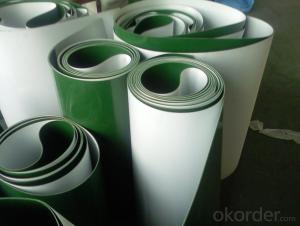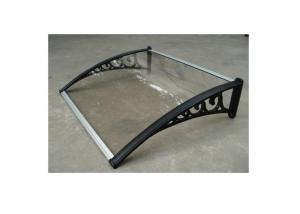PU PVC Conveyor Belt Food Processing Usage
- Loading Port:
- China main port
- Payment Terms:
- TT OR LC
- Min Order Qty:
- 10 m²
- Supply Capability:
- 6000000 m²/month
OKorder Service Pledge
OKorder Financial Service
You Might Also Like
Food Processing Conveyor Belt
Food Processing Conveyor Belt Introduction
Food processing conveyor belt choose high quality high strength polyester fabric are the core, coated with PU or PVC as loading surface. With advantages of good flexibility, material environmental friendly, light duty, high tensile strength, anti oil, easy learning, our food processing conveyor belt meet EU and USA market requirements.
Food Processing Conveyor Belt Application
Food processing conveyor belt is widely used in food industry, such as vegetables, snack food, beer, sea food, etc.
Food Processing Conveyor Belt Advantage
Food processing conveyor belt is made of harmless material, no toxicity, no smell, anti-oil, easy cleaning, high tensile strength, good flexibility, light weight, solid and durable.
Food Processing Conveyor Belt Specifications
Total thickness(mm) 0.8~5.0 | Top coating hardness( Shore A) 55~92 |
Total weight(kg/m2) 0.9~5.4 | Belt tension 1% elongation(N/mm) 5~ 30 |
Minimum production width(mm) 15~180 | Working temperature range(℃) -20/+90 |
Type of support R=expansion cylinder, S=flat, T=groove shape | Max production width(mm) 3000 |
Lateral stability Yes | Food grade Yes |
Low noise | Fire resistance |
Surface antis tatic |
Food Processing Conveyor Belt Photos




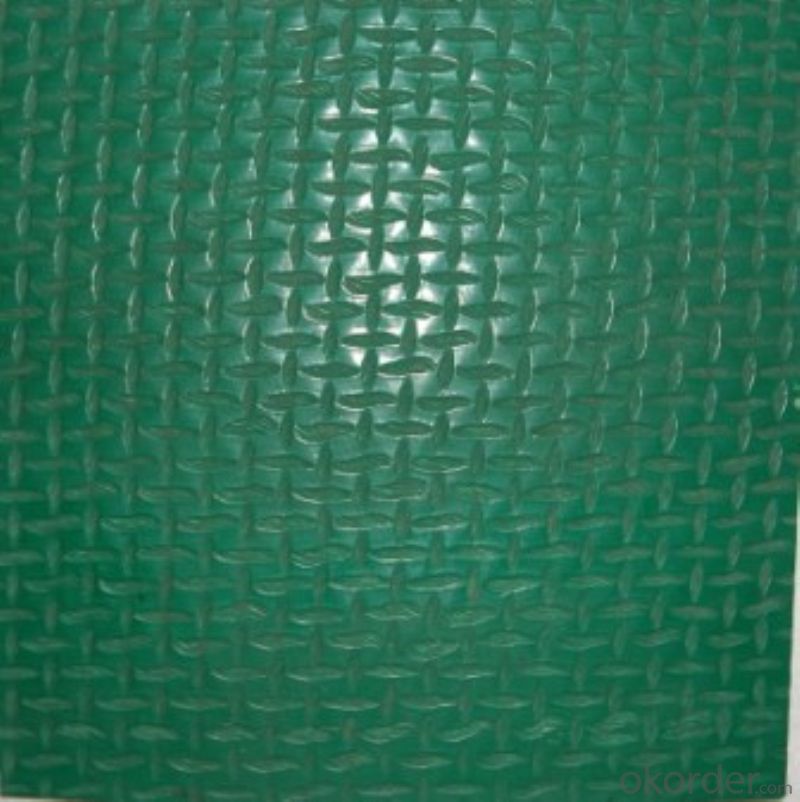


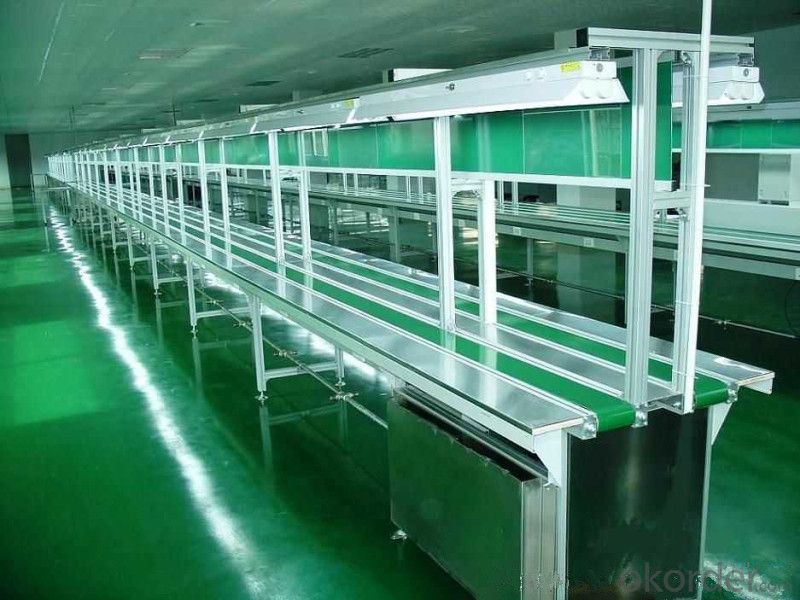
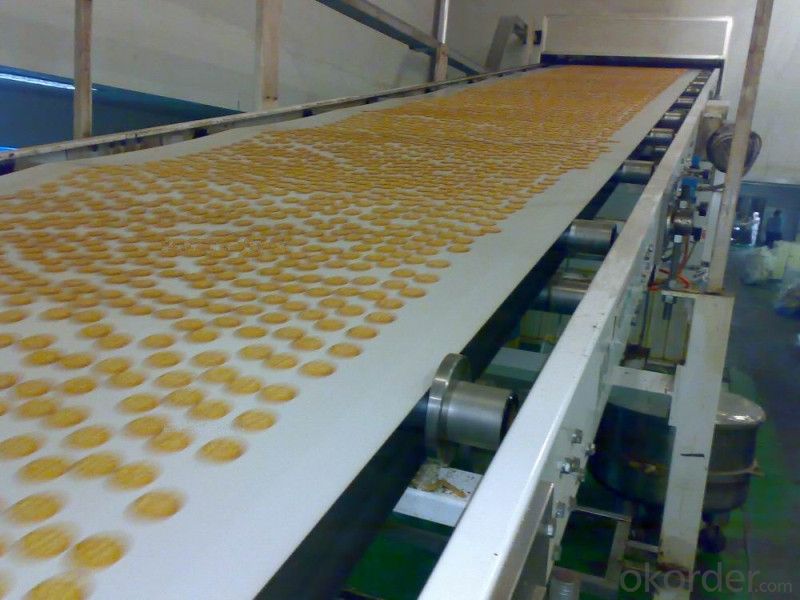
FAQ
1. Which payment do you accept?
For you convenience, our payment can be L/C, TT
2. Is free sample available?
We can supply free samples. You'll just need to pay for express cost.
3. How about your quality?
Quality is the first priority, we have strict quality control system.
1) All raw material we used are environmental freindly
2) Quality Control Department specially responsible for quality checking in each process. We make testing on incoming raw material and finished products. Your third party testing is also welcomed.
3) Skillful workers care every details in handling the producing and packing processes.
Our product quality is accepted by clients from all over the world. Warmly welcome your samples requirement or trail order.
- Q: Can olive nets be used in areas with heavy snowfall?
- No, olive nets are not suitable for areas with heavy snowfall as they are typically designed for harvesting olives and may not withstand the weight and pressure of heavy snow.
- Q: Can olive nets be used for olive trees in regions with high disease incidence?
- No, olive nets cannot effectively be used for olive trees in regions with high disease incidence. The nets may provide some protection against certain pests, but they do not offer sufficient protection against diseases. It is important to implement appropriate disease management strategies and treatments in such regions to safeguard the olive trees.
- Q: Do olive nets protect against insects?
- No, olive nets are primarily used to protect olives from birds and other animals, but they are not effective in preventing insects from reaching the olives.
- Q: Plastic products after melting, dip in the pot bottom, how to remove?
- It melted with fire. I suggest you use bamboo brush later. I don't think the plastic is good
- Q: What types of plastics do you have?
- At the beginning of the heating, the resin molecules are linear in structure and still have plasticity of thermoplastics. When continue heating, linear molecular chain is formed between the chemical bond (i.e., molecular cross-linking) were net shape structure, when the temperature reaches a certain value, molecules into the body structure, the resin into both melt and dissolve the state. Repeated heating does not soften any longer and is no longer plastic.
- Q: Are olive nets reusable for multiple seasons?
- Yes, olive nets are typically reusable for multiple seasons. They are designed to withstand different weather conditions and can be easily cleaned and stored for future use.
- Q: Can olive nets be used in combination with tree spacing techniques?
- Yes, olive nets can be used in combination with tree spacing techniques. Olive nets are often used to protect the olives from birds and other animals. By implementing tree spacing techniques, such as pruning or training the trees in a specific pattern, it becomes easier to install and use the nets effectively. Proper tree spacing techniques can ensure that the nets are securely attached to the trees and provide adequate coverage, resulting in enhanced olive production and protection.
- Q: How does an olive net affect the quality of the olives?
- An olive net can positively impact the quality of olives by providing protection against pests, preventing damage from wind or sunburn, and reducing the risk of contamination. It helps in maintaining the integrity and overall health of the olives, resulting in improved quality and higher yield during harvest.
- Q: Can olive nets be used for olive tree protection from animals?
- Yes, olive nets can be used for olive tree protection from animals. Olive nets are commonly used to prevent animals such as birds, squirrels, or other pests from accessing the olives. These nets are designed to cover the entire tree or specific branches, creating a physical barrier that keeps animals away from the olives. Additionally, olive nets can also protect the olives from potential damage caused by strong winds or extreme weather conditions.
- Q: Can olive nets be used in hilly or sloped olive groves?
- Yes, olive nets can be used in hilly or sloped olive groves. These nets are designed to be versatile and can be adjusted to fit different terrains. They can effectively catch olives on slopes and prevent them from rolling away, making harvesting easier and more efficient.
Send your message to us
PU PVC Conveyor Belt Food Processing Usage
- Loading Port:
- China main port
- Payment Terms:
- TT OR LC
- Min Order Qty:
- 10 m²
- Supply Capability:
- 6000000 m²/month
OKorder Service Pledge
OKorder Financial Service
Similar products
Hot products
Hot Searches
Related keywords



















